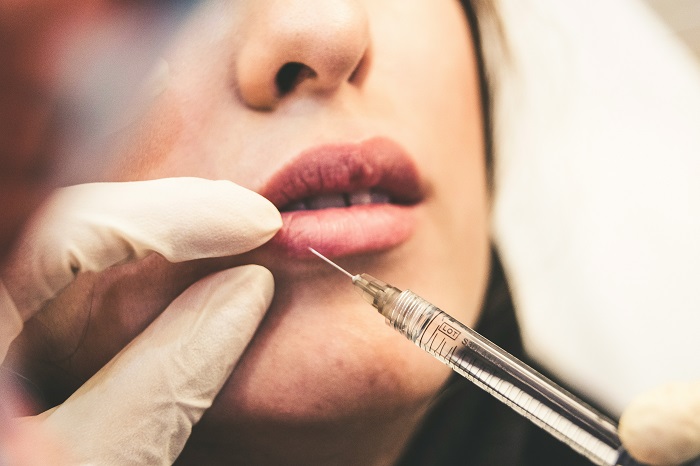In the intricate dance of human intimacy, few topics evoke as much discomfort and stigma as herpes. This often-misunderstood virus has long intertwined with our most intimate moments, serving as a sobering reminder of the risks inherent in the pursuit of connection. Herpes simplex virus (HSV) manifests in two primary forms: HSV-1, typically associated with oral herpes, and HSV-2, predominantly linked with genital herpes. Close personal contact can transmit both strains, with symptoms ranging from mild discomfort to painful outbreaks.
Understanding herpes’ historical context is crucial for grasping its impact on intimacy practices. “Making out” may evoke romance but highlights the connection between desire and disease transmission.
Throughout history, cultural norms, societal taboos, and medical knowledge about STIs like herpes have influenced intimacy. Exploring herpes’ historical roots provides insights into how societal attitudes shape its transmission and management.
Expressing love unintentionally facilitates herpes proliferation. This exploration aims to uncover herpes’ history in the era of making out, shedding light on the relationship between love, viruses, and human behavior.
Read more: The Turtle Herpes Mystery Unraveled by Brevard Zoo
The Origins of Herpes
Herpes, with its characteristic blisters and sores, has left a historical trail dating to ancient civilizations. While the term “herpes” is relatively modern, dating to around the 5th century BCE, evidence of the virus’s presence in human populations predates written records.
Ancient civilizations, including the Egyptians, Greeks, and Romans, documented skin lesions resembling herpes symptoms. Hieroglyphic inscriptions from ancient Egypt depict individuals with sores on their lips, suggesting oral herpes infections. Greek and Roman texts frequently mention ‘herpes’ or ‘herpes-like lesions,’ showing that these societies recognized and observed the virus. However, they often shrouded early perceptions of herpes in mystery and superstition. In ancient Greece and Rome, people typically associated herpes with divine punishment or moral failings. Consequently, those afflicted sometimes faced ostracism or suspicion, adding to the stigma that still surrounds the virus today.
Diagnosing and treating herpes in earlier centuries posed significant challenges due to limited medical knowledge and resources. Ancient healers and physicians relied on a mixture of empirical observation and herbal remedies to address symptoms. However, without a comprehensive understanding of viral transmission and the underlying mechanisms of herpes infection, treatments often yielded mixed results at best.
One of the earliest known treatments for herpes dates back to ancient Egypt, where physicians prescribed a concoction of honey, garlic, and other botanical ingredients to alleviate symptoms. In ancient Greece, physicians such as Hippocrates documented the use of various herbal remedies and poultices to treat skin lesions resembling herpes sores. Despite these efforts, the true nature of herpes and its viral origins remained elusive until the advent of modern microbiology.
The Rise of Making Out
The evolution of “making out” as a cultural practice reflects shifts in societal attitudes towards intimacy and affection throughout millennia. While the term is relatively modern, kissing and intimate physical contact have deep roots in human behavior and culture.
Ancient civilizations such as Mesopotamia provide origins of kissing, where depictions of couples engaged in intimate embraces adorn pottery and artwork dating back over 4,000 years. In old India, the Kama Sutra—a revered text on love and sexuality—describes various kissing techniques and emphasizes the importance of physical intimacy in romantic relationships.
Kissing symbolizes love and intimacy in some cultures. In medieval Europe, kissing was often seen as immoral. Religious authorities imposed strict rules on kissing. The Renaissance period witnessed a revival of interest in romantic love and courtship, Leading to a resurgence of kissing in literature, art, and cultural practices. The Romantic movement of the 18th and 19th centuries further elevated kissing as a poetic expression of affection and desire,
They were immortalized in the works of poets and artists. In the early 20th century, the idea of “making out” emerged alongside broader changes in societal attitudes toward sex and intimacy. Particularly in Western cultures, as views became more liberal, Kissing shifted from a private expression of affection to a public demonstration of romantic interest and desire.
Throughout the 20th century, mass media and popular culture significantly made “making out” more widespread. It became a typical portrayal in films, literature, and music, presenting it as an integral part of romantic relationships. Additionally, technological advancements like automobiles and the availability of private spaces for courtship further normalized kissing and physical intimacy outside of traditional social settings.
The Herpes Epidemic and Making Out
The rise of making out is linked to the spread of herpes simplex virus (HSV). Making out involves intimate contact, including kissing and oral-genital contact. Herpes simplex infections, especially HSV-1 and HSV-2, closely correlate with making out. Recognizing the connection between making out and herpes transmission is crucial. Practical strategies for mitigating virus spread hinge on understanding this intersection.
Read more: A Brighter Future: $2.8 Million Boosts Herpes Vaccine Development.
Correlation between Making Out and Herpes Transmission:
- Making out involves close personal contact and the exchange of bodily fluids, providing an ideal environment for herpes transmission.
- Kissing can transmit HSV-1, typically associated with oral herpes, mainly when active cold sores or asymptomatic shedding of the virus occurs. Oral-genital contact during making out can also transmit HSV-2, primarily linked with genital herpes, resulting in genital herpes infections.
Role of Sexual Education and Awareness:
- Comprehensive sexual education plays a vital role in addressing herpes transmission by promoting awareness of the risks associated with making out and other intimate activities.
- Educating individuals about the importance of disclosing their herpes status to sexual partners can help prevent the spread of the virus and foster open communication about sexual health.
- Empowering individuals with accurate information about herpes, including its symptoms, transmission routes, and treatment options, can reduce stigma and encourage proactive infection management.
Impact of Herpes on Intimate Relationships:
- Herpes infections can have profound implications for intimate relationships, often leading to feelings of anxiety, guilt, and uncertainty among affected individuals and their partners.
- Case studies and statistical data illustrate the significant emotional and psychological toll of herpes on intimate relationships, including decreased sexual satisfaction, relationship dissatisfaction, and increased risk of relationship dissolution.
- Couples affected by herpes may face challenges in navigating issues such as disclosure, risk reduction strategies, and sexual intimacy, highlighting the need for supportive resources and counselling services.
Studying making out’s links to herpes helps raise awareness. Promoting sexual education is critical to reducing herpes transmission. Recognizing herpes’ impact on relationships is crucial. Empowering individuals with knowledge fosters safer intimacy. Combating herpes requires informed choices and resources.
Read more: Unveiling the Presence of Herpes in Florida’s Monkeys
The Future of Intimacy and Herpes
As society continues to evolve, so will the landscape of intimacy practices and their implications for herpes transmission. Speculating on future trends requires a nuanced understanding of changing social norms, technological advancements, and ongoing research in herpes prevention and treatment.
Future Trends of Intimacy Practices:
- Online dating platforms and virtual communication tools are transforming intimate relationship dynamics.
- Virtual interactions provide new ways to connect while reducing the risk of herpes transmission.
- Virtual reality (VR) technology advances may change how intimacy is experienced.
- VR allows for immersive interactions without physical proximity.
- The normalization of open relationships and polyamory affects herpes transmission dynamics.
- Communication, negotiation, and risk-reduction strategies are crucial in intimate networks.
Ongoing Research and Innovations in Herpes Prevention and Treatment:
- Ongoing research focuses on developing novel approaches to herpes prevention, including vaccines, microbicides, and gene-editing techniques targeting the herpes virus.
- Innovations in antiviral therapies include long-acting injectable medications and topical creams.
- They may provide more convenient and effective options for managing herpes symptoms.
- Collaborative initiatives between researchers, healthcare providers, and community stakeholders are essential.
- They advance understanding of herpes transmission dynamics.
- They help develop targeted interventions to reduce the spread of the virus.
Destigmatizing Herpes and Promoting Empathy and Understanding:
- Destigmatizing herpes requires a concerted effort to challenge myths, misconceptions, and negative attitudes surrounding the virus.
- Public health campaigns, educational initiatives, and media representations are crucial for herpes awareness.
- They promote empathy toward affected individuals and foster inclusive communities.
- Empowering individuals with herpes to share their stories humanizes the virus.
- It combats the pervasive stigma surrounding herpes.
- Cultivating empathy and understanding is essential for supportive spaces.
- Those affected by herpes feel supported, valued, and empowered.
- The future of intimacy and herpes depends on social, tech, and science dynamics. Embracing innovative intimacy approaches is crucial. Investing in research can minimize herpes transmission. Promoting empathy helps destigmatize herpes. A future with healthy, fulfilling relationships is attainable.



